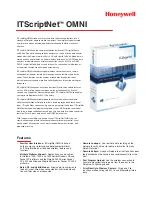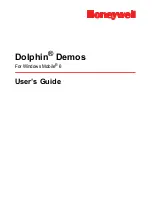
Chapter 25
Specific settings and troubleshooting
382
net would be routed via this interface (no matter where it is actually connected to) and
WinRoute
would not dial the line.
2.
Only one link can be set for on-demand dialing in
WinRoute
.
WinRoute
does not enable
automatic selection of a line to be dialed.
3.
Lines can be also dialed if this is defined by a static route in the routing table (refer to
chapter
). If a static route via the dial-up is defined, the packet matching this route
will dial the line. This line will not be used as the default route — the
Use default gateway
on remote network
option in the dial-up definition will be ignored.
4.
According to the factors that affect total time since receiving the request until the line
is dialed (i.e. line speed, time needed to dial the line, etc.) the client might consider
the destination server unavailable (if the timeout expires) before a successful connection
attempt. However,
WinRoute
always finishes dial attempts. In such cases, simply repeat
the request, i.e. with the
Refresh
button in your browser.
Technical Peculiarities and Limitations
Demand dialing has its peculiarities and limitations. The limitations should be considered
especially within designing and configuration of the network that will use
WinRoute
for con-
nection and of the dial-up connected to the Internet.
1.
Demand dial cannot be performed directly from the host where
WinRoute
is installed
because it is initiated by
WinRoute
low-lever driver. This driver holds packets and decides
whether the line should be dialed or not. If the line is disconnected and a packet is sent
from the local host to the Internet, the packet will be dropped by the operating system
before the
WinRoute
driver is able to capture it.
2.
Typically the server is represented by the DNS name within traffic between clients and an
Internet server. Therefore, the first packet sent by a client is represented by the DNS query
that is intended to resolve a host name to an IP address.
In this example, the DNS server is the
WinRoute
host (this is very common) and the line
to the Internet is disconnected. A client’s request on this DNS server is traffic within the
local network and, therefore, it will not result in dialing the line. If the DNS server does
not have the appropriate entry in the cache , it must forward the request to another server
on the Internet. The packet is forwarded to the Internet by the local DNS client that is run
at the
WinRoute
host. This packet cannot be held and it will not cause dialing of the line.
Therefore, the DNS request cannot be answered and the traffic cannot continue.
For these reasons,
WinRoute DNS Forwarder
enables automatic dialing (if the DNS server
cannot respond to the request itself). This feature is bound to on-demand dialing.
Note:
If the DNS server is located on another host within the local network or clients within
the local network use a DNS server located in the Internet, then the limitation is irrelevant
and the dialing will be available. If clients’ DNS server is located on the Internet, the line
Summary of Contents for Firewall6
Page 1: ...Kerio WinRoute Firewall 6 Administrator s Guide Kerio Technologies...
Page 129: ...8 5 HTTP cache 129...
Page 404: ...404...
















































